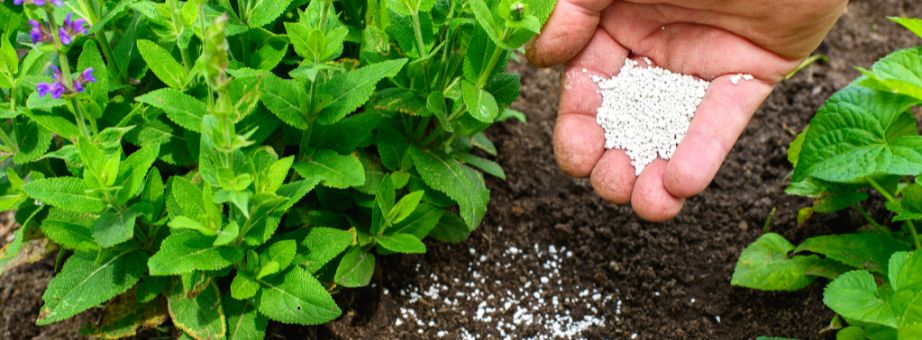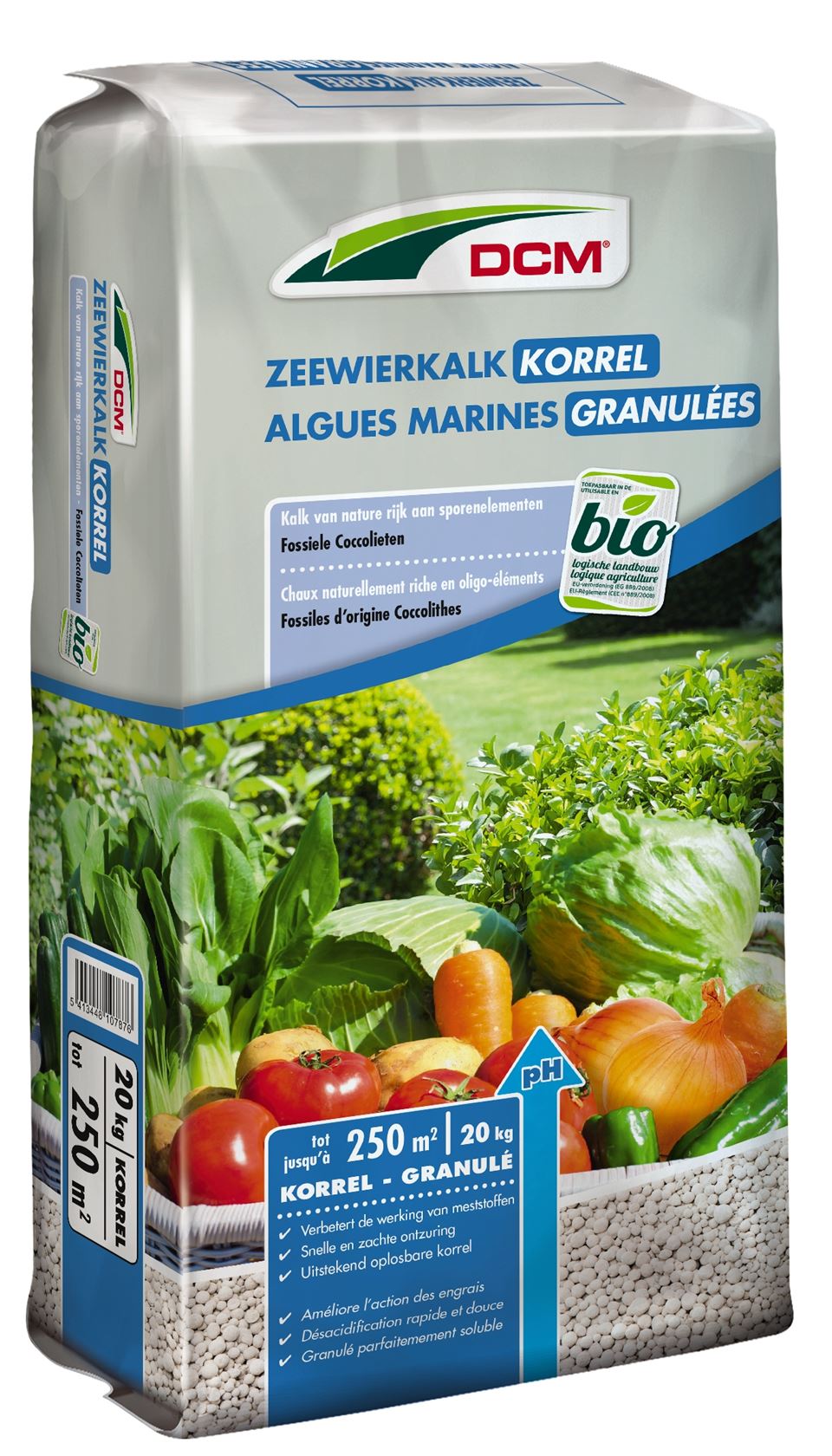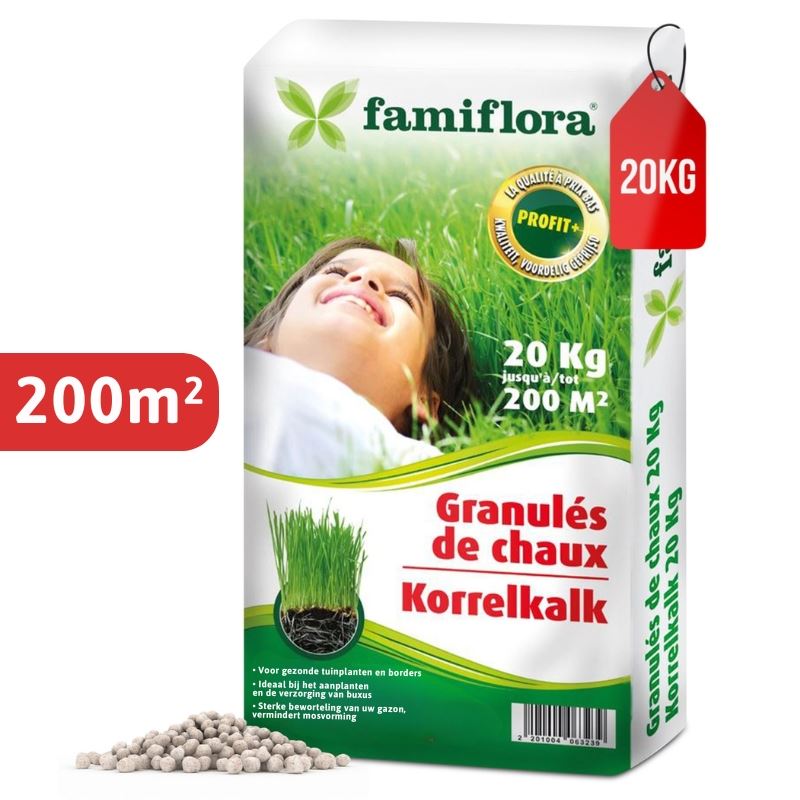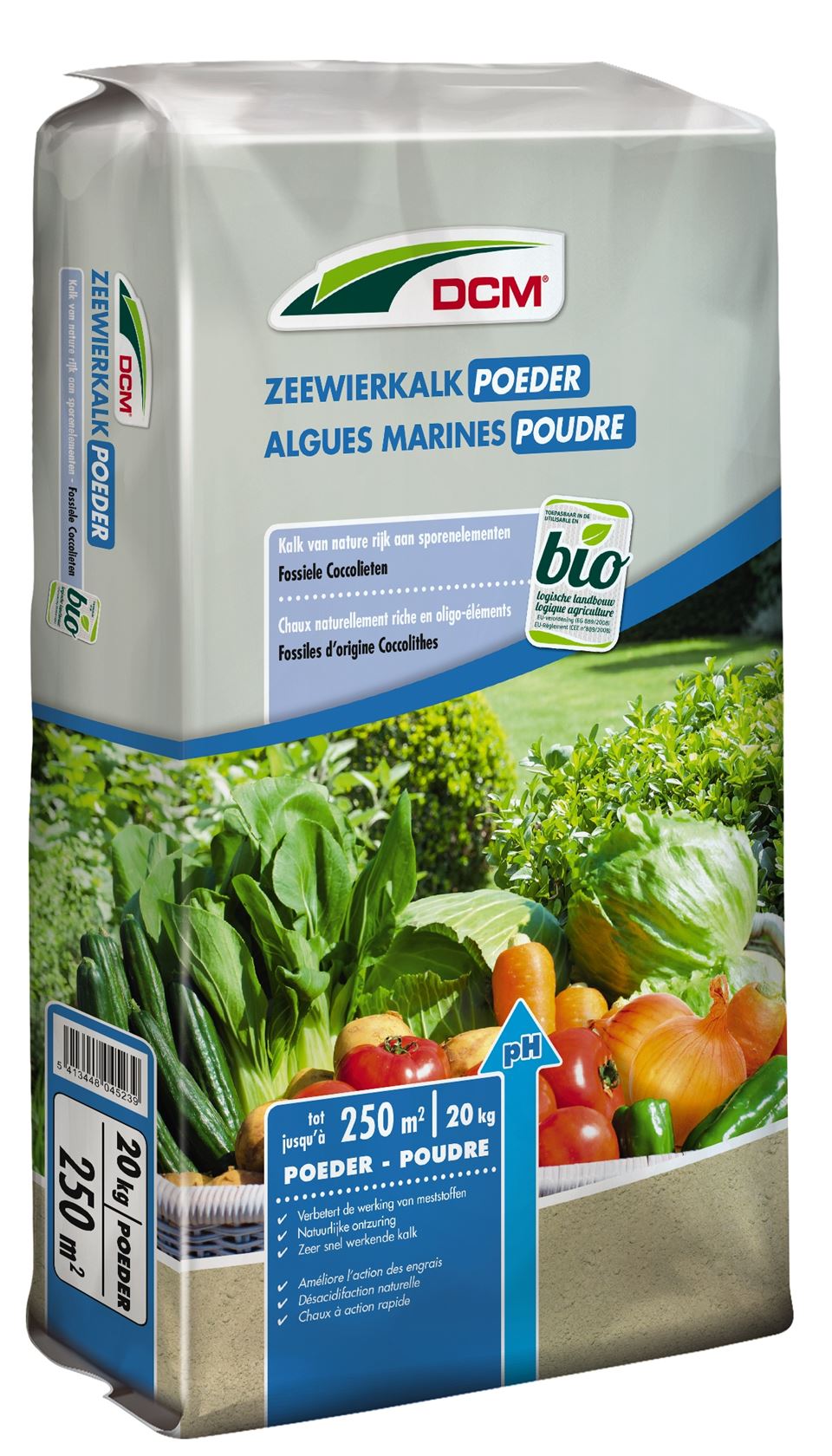Renewed vigour: the importance of lime
We often think of lime as something negative, as it can build up in the body's tendons, for example (in the form of calcium), and cause various health problems. Moreover, lime can mercilessly shorten the lifespan of many household appliances. For the soil quality of your garden, on the other hand, lime can really do wonders.
Beware: Acid-loving plants such as rhododendron, azalea, heather, blue hydrangea, etc. need rather acidic soil. "Be careful before you start!"
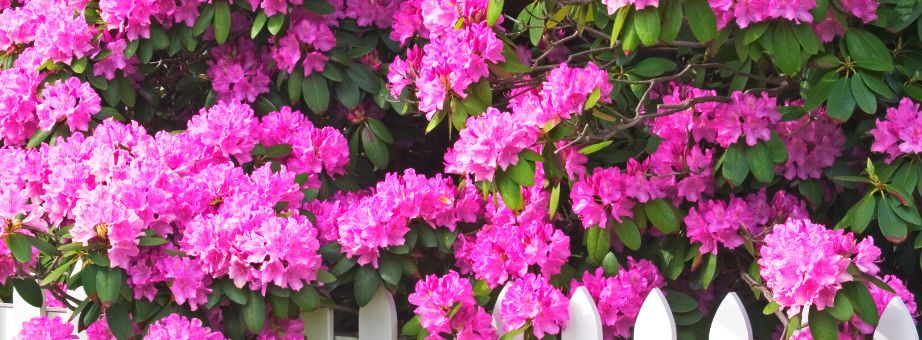
By liming the soil to a neutral level (pH around 7), most ornamental and kitchen garden plants will grow and flower better. Thus, they get more beautiful leaves and blossoms, and vegetable garden plants produce bigger fruits. Moreover, grasses also thrive in that neutral pH soil. Lime for the lawn can therefore certainly help to achieve a deep green lawn. In addition, moss is indirectly combated when you lime your lawn because moss, unlike grass, likes a more acidic soil.
Beware: Liming your lawn is best done a few weeks before applying lawn fertilisers, so that the lime is already well incorporated. If you use them together, you are actually wasting your money. The lime and fertilisers will react chemically, losing the effectiveness of both products.
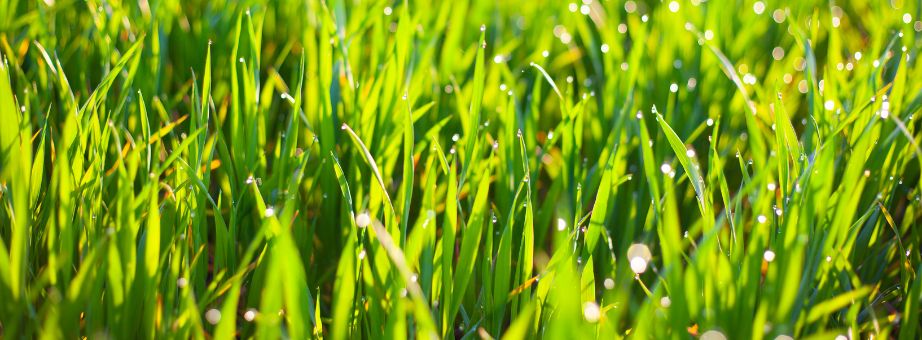
What about the vegetable garden?

Acidity of the soil
Did you know that the pH level in the majority of Belgian and Dutch soils is too low? Soil that is too acidic can be pernicious for the yield of your vegetable garden. After all, it leads to reduced uptake of essential nutrients such as nitrogen, phosphorus, potassium, magnesium and sulphur. Seedlings in particular can be negatively affected by this.
Function of lime
After you have measured the pH level of your soil by using a pH meter, you can start liming the soil. By liming your soil, you ensure that the acidity of your plot is maintained. After all, lime is a collective name for alkaline (basic) salts that occur in various variants in nature. It is a natural and highly effective soil improver whose value is often overlooked.
Beware: Acid-loving plants such as rhododendron, azalea, heather, blue hydrangea, etc. need rather acidic soil. "Be careful before you start!"

By liming the soil to a neutral level (pH around 7), most ornamental and kitchen garden plants will grow and flower better. Thus, they get more beautiful leaves and blossoms, and vegetable garden plants produce bigger fruits. Moreover, grasses also thrive in that neutral pH soil. Lime for the lawn can therefore certainly help to achieve a deep green lawn. In addition, moss is indirectly combated when you lime your lawn because moss, unlike grass, likes a more acidic soil.
Beware: Liming your lawn is best done a few weeks before applying lawn fertilisers, so that the lime is already well incorporated. If you use them together, you are actually wasting your money. The lime and fertilisers will react chemically, losing the effectiveness of both products.

Differences between lime forms
There are two major differences in form:
Lime in powdered form:
- Works quickly;
- Easy absorption into soil;
- Can be dusty;
- Difficult to use in windy conditions;
- Used almost exclusively by professionals these days.
Lime in granular form:
- Easier to use;
- Gradual absorption into the soil;
- Works for a long time;
- Can be evenly distributed using a spreader;
- Ideal for lawns.
Differences between lime varieties
Green lime
- Granular form;
- Rich in magnesium;
- Gives the lawn a fresh green colour;
- Applicable in organic gardens;
- Applicable in ornamental gardens.
Seaweed lime
- Available in granular and powder form;
- Low in magnesium;
- Rich in calcium
- Rich in trace elements;
- Has a mild effect;
- Applicable in kitchen garden, ornamental garden, orchard and pond;
- Applicable in organic gardens.
When to lime your lawn?
It is sufficient to lime the lawn once a year if the soil is slightly acidified (pH between 5.5 and 6). It is best to do this in late autumn or immediately after winter. If the soil is highly acidified (pH below 5), you should lime during both periods until the acidity of the soil returns to neutral. Use about 1 to 1.5 kg of lime per 10 m². In highly acidified soils, this recommended amount may be higher. "Measuring is knowing!"
Tip 1: Choose a rainy day to lime. That way, the pellets are more easily absorbed into the soil, resulting in faster results. If there is snow, this is not a problem, it can even be beneficial. In fact, after the thaw, the granules are absorbed faster, resulting in improved soil.
Tip 2: Mow your grass before liming the lawn. This allows the granules to reach the soil easily, because they will not get stuck that easily on or between the blades of grass.
What about the vegetable garden?
It is best to lime your vegetable garden in spring or autumn. Actually, any extensive wet period is ideal for liming your vegetable garden, because of the improved absorption in the soil. The following logic speaks for itself: the more acidic the soil, the more lime you will need. With 1 kg of lime, you normally have enough for 10 m², although in heavily acidified soils this can be as much as 2 kg. It is important to know that tomato plants strongly acidify the soil. After the growing season, it is therefore recommended to lime the areas where the tomatoes stood.

Synopsis
Lime can do wonders for soil quality in gardens. Many Belgian and Dutch soils have low pH levels, which can be detrimental to crop yields by reducing nutrient absorption. Adding lime to the soil helps maintain acidity, which benefits the growth and flowering of most plants, including lawns. It is important to note that acid-loving plants need acid soil and should not be treated with lime. Lime application to lawns should be done separately from fertilisers to avoid chemical interactions. Lawns should be mowed before application for better penetration. In the garden, lime can be applied during wet periods for better absorption, with larger amounts needed for more acidic soils.

Tip from Marcel
As we have discussed, lime can do wonders for your lawn or vegetable garden.
We have already selected a few toppers for you! 👇
Read more gardening tips? 👇
More info? Receive all our gardening tips directly in your mailbox!
We'll only email you handy facts, green advice and our best promotions & discounts. You'll receive it about once a week and you can unsubscribe at any time. No spam, promise 🤞












